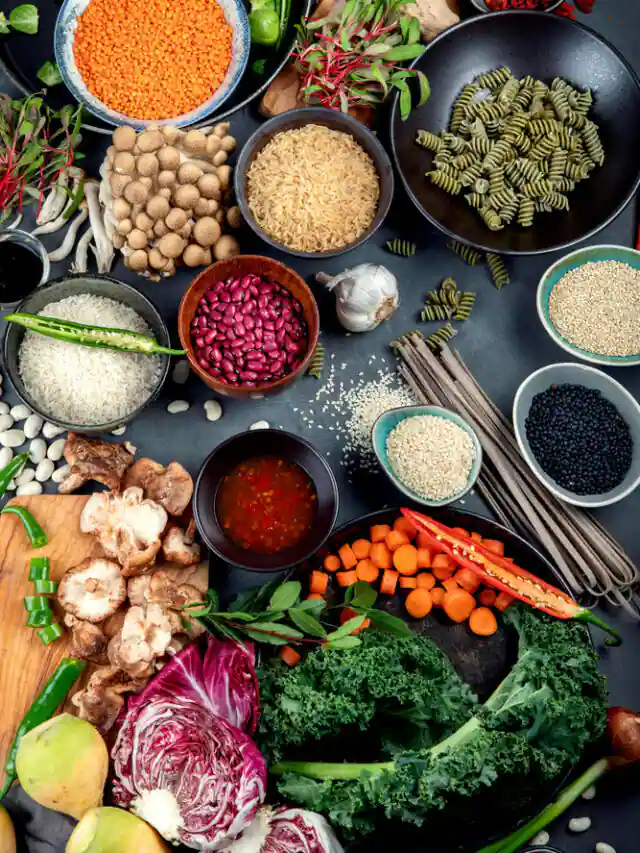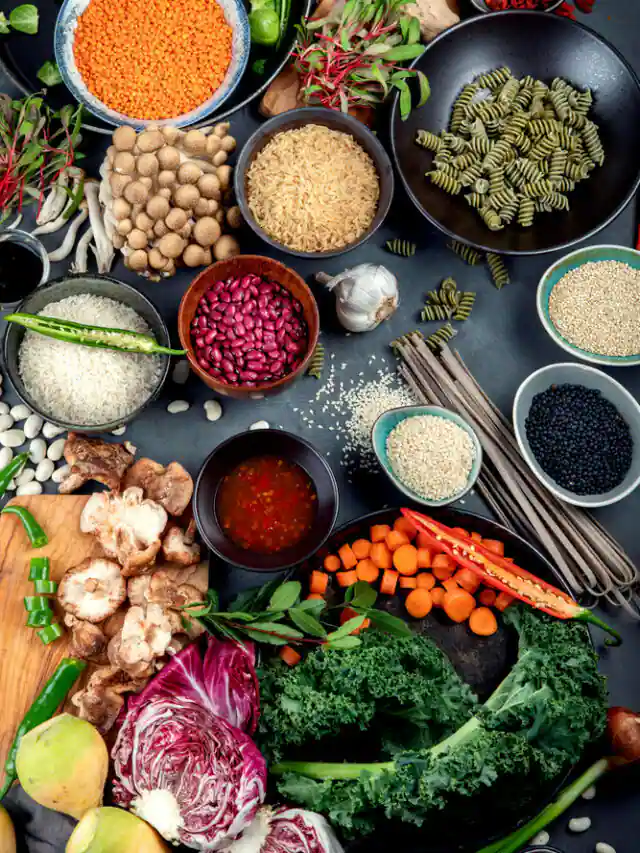The Background: Why We Need a Culinary Time Machine
Hello, cherished members of the Mana Vantillu (Our Kitchen) family! I’m speaking to you today not just as a chef, but as a busy homemaker, a dedicated mother, a health-conscious nutritionist, and a life coach who understands the crushing weight of a packed schedule.
In the 21st century, time is our most precious non-renewable resource. We rush from the yoga mat to the office, from school pick-up to evening deadlines. When we finally get home, the last thing we want is to spend another hour chopping, stirring, and cleaning.
This is where the magic of kitchen efficiency comes in.
This post isn’t just about saving minutes; it’s about reclaiming your evening, reducing stress, improving your health (by avoiding last-minute takeout), and saving your hard-earned money. It’s about transforming your relationship with your kitchen from a chore to a creative, joyful necessity.
I’ve compiled 14 high-impact, time-saving techniques that are guaranteed to revolutionize how you approach cooking-especially if you’re a beginner feeling overwhelmed. Think of this as your personal masterclass in kitchen logistics.
Let’s dive into the art of cooking smarter, not harder!
Part 1: The Pre-Game – Strategy & Planning (The Money Manager’s Mindset)
Any successful meal starts long before the flame is lit. This foundational strategy is where your Money Management Person and Lifestyle Blogger hats come on.
1. The Weekly Meal Matrix: Plan to Conquer
- The Pro-Tip: Dedicate 15 minutes every weekend (Sunday morning is ideal) to sketch out your meals for the coming week.
- The Homemaker/Life Coach Angle: This isn’t just about food; it’s about reducing decision fatigue. By pre-deciding your meals, you eliminate the daily 5 PM scramble and subsequent stress, freeing up mental bandwidth for more important things.
- The Money Management Advantage: A planned menu allows you to create a precise shopping list. This drastically cuts down on impulse buys, waste, and expensive emergency trips to the store, directly impacting your budget.
- High-Quality Info: Group your recipes by major ingredients. If you’re making rajma on Tuesday, plan to use the leftover chopped onion and tomato base for bhindi masala on Wednesday. This maximizes ingredient usage.
2. Smart Shopping Strategy: The 15-Minute Rule
- The Technique: Shop once, shop quickly, and shop with an organized, categorized list.
- Expert Insight (Foodie/Chef): Arrange your shopping list in the order of the store layout: Produce, Dairy, Grains, Meat/Protein, Frozen. This ensures you aren’t crisscrossing the store, which saves time and prevents you from seeing appealing but unnecessary items (further enforcing the Money Manager role!).
- The Health Bonus (Nutritionist): When shopping, prioritize the perimeter of the store (fresh produce, lean proteins). The middle aisles are where packaged, processed, time-consuming foods lurk. Shopping fast keeps you focused on whole ingredients.
Part 2: The Prep Game – Mise en Place Mastery (The Chef’s Secret)
The French term Mise en Place literally means “everything in its place.” This is the single most important technique a chef uses to stay calm under pressure. Applying this at home is a game-changer.
3. The Big Chop: Batch Prepping Vegetables
- The Technique: Set aside 30-45 minutes on your meal prep day (Sunday or Monday) solely for chopping and basic ingredient preparation.
- What to Prep:
- Aromatics: Chop a large batch of onions, garlic, and ginger. Store them separately in airtight containers.
- Hard Vegetables: Dice carrots, potatoes, and bell peppers. They hold up well for 3-4 days.
- Greens: Wash, dry thoroughly (use a salad spinner!), and store salad greens or spinach.
- The Result: Cutting a single onion takes about 2 minutes. Cutting seven onions takes less than 10. You save 4 minutes per day, totaling 28 minutes a week, simply through batching this repetitive task.
4. Protein Par-Cook: Cooking Grains and Pulses
- The Technique: Never cook rice, quinoa, or dry beans/lentils daily. Cook a massive batch.
- The Homemaker’s Reality: Need rice for stir-fry, a dal accompaniment, or a quick khichdi? Having pre-cooked grains/pulses is instant meal foundation.
- Storage Tip: Cook a double batch of rice or quinoa. Divide it into individual portion containers. Cool completely before freezing half. Frozen rice reheats perfectly in the microwave or a pan with a splash of water.
5. Spice Blending & Marinating: The Flavor Shortcut
- The Chef’s Move: Make your spice blends in bulk. Don’t grind small quantities daily. Keep a pre-mixed garam masala, sambar powder, or even a basic chili/turmeric/coriander mix ready.
- Marinade Magic: If you plan on making chicken tikka, fish fry, or paneer skewers, marinate the proteins the night before or first thing in the morning. A 30-second task (toss in marinade) in the morning saves 30 minutes of flavor infusion/prep time in the evening.
Part 3: The Cook Game – Execution & Efficiency (The Doctor’s Prescription for Speed)
Now that the prep is done, we focus on the actual cooking process, leveraging modern tools and smart techniques.
6. The Pressure Cooker/Instant Pot: The Time-Warp Device
- The Expert’s Take (Material Quality/Utensils): A high-quality stainless steel pressure cooker is arguably the best time-saving, energy-efficient utensil in the Indian kitchen. It drastically reduces the cooking time for staples like pulses (dals, chickpeas, beans), rice, and hard vegetables.
- The Doctor’s Advice: Using an Instant Pot for “one-pot meals” (like pulav, biryani, or stew) means fewer dishes to wash, which is a massive stress reducer-a key component of good mental health!
- High-Quality Info: Use the “Sauté” function to build your masala base, then add the ingredients and switch to the “Pressure Cook” function. Complete an entire curry or dal in one vessel.
7. The Sheet Pan Power Play: Oven Roasting
- The Technique: For continental or fusion cooking, embrace the sheet pan.
- How it Works: Toss protein (e.g., chicken or tofu) and chopped vegetables (e.g., broccoli, potatoes, peppers) with oil and spices directly onto a single, parchment-lined baking sheet. Roast in the oven.
- The Foodie’s Delight: This technique yields perfectly cooked food with minimum effort. The high, dry heat of the oven creates excellent caramelization (the Maillard reaction), boosting flavor exponentially. Clean-up is one pan!
8. Dual-Stove Synergy: The Art of Multi-Tasking (Safely)
- The Chef’s Method: Use all available cooking surfaces simultaneously.
- The Safe Approach: While one burner is used for a low-and-slow task (e.g., simmering dal), use the other for a quick-sear task (e.g., sautéing vegetables). Never attempt two tasks that require intense, constant stirring.
- The Yoga Trainer Analogy: Think of this as balance. You need one foundation task and one quick-moving task. Maintain your focus (your “breath”) to manage both without panic.
9. Water Boiling: The Head Start
- The Simple Secret: Whenever you need boiling water (for pasta, blanching vegetables, or starting a soup), don’t wait for the stove. Use an electric kettle to boil the water first, then pour it into your pot on the stove. This simple switch saves 5-10 minutes of heating time and is a highly efficient energy transfer.
10. The Freezer Friend: The Batch Cooking Principle
- The Technique: When you cook, double the recipe. Eat half now, freeze half for later.
- Ideal Freezer Candidates:
- Indian curry bases (onion-tomato masala)
- Soups and stews
- Dal or Chhole/Rajma
- Meatballs or burger patties
- Par-baked flatbreads (parathas or rotis can be frozen post-cooking and quickly reheated)
- The Money Manager’s Score: You save the time and energy cost of cooking a full meal by simply reheating a pre-made batch. This is financial and time wealth combined.
Part 4: The Clean-Up & Organization Game (The Expert in Material Quality)
A clean kitchen is a fast kitchen. Efficiency extends right up to the sink.
11. Clean-As-You-Go: The Continuous Flow
- The Life Coach Philosophy: This technique is a metaphor for life. Don’t let tasks pile up.
- The Kitchen Rule: As soon as you finish chopping, rinse the board and knife. While the onions are sautéing, wash the measuring cups. By the time the food is on the table, 80% of the dishes should be in the dishwasher or soaking. This eliminates the dreaded post-dinner “wall of dishes.”
12. Material Matters: Choosing the Right Utensils
- Expert Insight (Material Quality):
- Non-Stick vs. Stainless Steel: Use high-quality Stainless Steel for everyday cooking. While needing a little more oil, it’s durable, non-reactive, and easy to clean (a quick soak and scrub). Use non-stick sparingly (for eggs or delicate items) as scratched coating is a health hazard.
- Silicone Scrapers: Use flexible silicone spatulas/scrapers to clean batter or sauces out of bowls. They get every last drop, reducing food waste and significantly reducing rinsing time.
- Glass Containers: Store prepped ingredients in stackable, clear glass containers. You can see what you have (less waste) and they stack neatly, maximizing fridge space.
13. The Minimalist Appliance Philosophy
- The Technique: Only keep the appliances you use daily or weekly on the counter.
- The Homemaker’s Wisdom: A cluttered counter is a cluttered mind, and it slows you down. If your mixer, grinder, or air fryer is buried in a cupboard, you won’t use it. If it’s on the counter, you’ll grab it. Keep your countertop clear for chopping and assembly.
14. The Template Meal: Cooking without a Recipe
- The Advanced Move: Learn a basic “template meal” structure that you can endlessly customize.
- Example Template (Indian):
- Aromatics (prepped): Onion, Ginger, Garlic $\rightarrow$ Sauté
- Spices (pre-mixed): Turmeric, Chili, Coriander $\rightarrow$ Cook
- Base: Tomato Puree $\rightarrow$ Simmer
- Protein/Veggies: (Chickpeas, Paneer, Potato, or Chicken) $\rightarrow$ Cook with sauce
- Finishing: Salt, Garam Masala, Cilantro $\rightarrow$ Serve.
- The Blogger’s Secret: By mastering this structure, you don’t need to look up a recipe every night. You just swap one ingredient (protein, vegetable) for another, saving you precious cognitive time.
Part 5: The Holistic Lifestyle Connection (Yoga Trainer & Doctor)
Cooking faster isn’t just about the food; it’s about the quality of your life.
As your Doctor and Nutritionist, I can tell you that when you cook at home, you control three vital things: Salt, Sugar, and Fat. This is the number one preventative health measure you can take. Utilizing these time-saving techniques makes home cooking sustainable.
As your Yoga Trainer, I emphasize Pratyahara-withdrawal of the senses. The cooking process, when rushed, is stressful. When you practice Mise en Place and efficiency, the kitchen becomes a place of mindfulness. You are focused, intentional, and calm. This is active meditation!
A quick comparison:
| Habit | Slow Cooking (Stressful) | Fast Cooking (Efficient) |
| Start | “What should I cook?” | “Plan is Rajma-Rice.” |
| Prep | Chop one onion daily. | Use pre-chopped aromatics. |
| Cook | Wait 45 min for chhole. | Pressure cook in 15 min. |
| Clean-Up | A mountain of dishes after dinner. | Clean as you go; minimal effort later. |
| Result | Takeout temptation; Stress; Waste. | Healthy meal; Calm evening; Savings. |
Final Thoughts from Your Mana Vantillu Guide
I know these 14 tips might seem like a lot, but I encourage you to choose just three to implement this week. Start with Meal Planning, Batch Chopping, and using the Pressure Cooker for one meal.
Cooking is an act of love, self-care, and empowerment. By reclaiming your time in the kitchen through smart, efficient techniques, you are setting yourself up for better health, less stress, and a richer life.
Let’s step into our kitchens with the confidence of a seasoned chef and the calm of a dedicated yogi. Happy cooking, and may your evenings be beautifully free!










